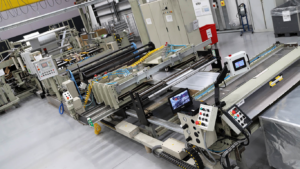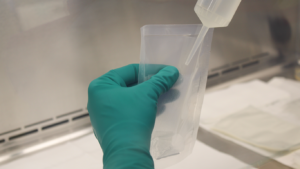PT-141 peptide has been studied extensively, the studies we will focus on today are concerned with the peptide’s possible interaction with infections. PT-141 has been considered a compound considered to have tremendous potential in research studies in this area.
The peptide PT-141 is thought to be one of a kind as its studies suggest it may be capable of stimulating the MC-4R. This receptor is speculated to promote sexual excitement in the central nervous system and potentially alter sexual behavior [i, ii]. Research suggests both male and female mouse models may experience increased sexual desire and the number of times they copulate when an agonist binds to the MC-4R receptor [iii, iv]. Scientists hypothesize it is feasible to mitigate sexual arousal problems in male and female mouse models that result from factors other than restricted blood flow to the genitals with PT-141 since it may operate through a different mechanism than other compounds.
In a clinical trial studying test subjects with erectile dysfunctions, researchers observed that around one-third of the subjects given PT-141 appeared to achieve a satisfactory erection for sexual intercourse. This suggests that PT-141 may be able to give insight into mitigating the dysfunction, as well as perhaps offering insight into fundamental reasons for hypoactive sexual desire.
PT-141 Peptide and the Hemorrhage
In 2009, PT-141 had some minor modifications to conduct research on it as a possible mitigator for hemorrhagic shock. Studies suggest that in hypovolemic (hemorrhagic) shock, PT-141 may bind to both MC-1R and MC-4R, potentially lowering ischemia and protecting tissues against an inadequate blood supply. The compound did not affect test subjects significantly when given in this manner. Before then, it had been tested in phase IIb. The name given to the improved version of PT-141 is PL-6983.
PT-141 Peptide and Infection
A rat model of a particular fungal infection suggested that the MC-1R may have had significant antifungal and anti-inflammatory potential [v]. This was discovered by studying the receptor’s action on rats with fungal infections. This is of utmost significance because existing antifungals are considered by scientists ot be restricted in terms of the mode of action used, and they may create research-limiting effects. The availability of an alternate method for mitigating fungal infections has the potential to significantly cut morbidity and death rates, particularly in test subjects whose immune systems are compromised.
PT-141 and Carcinogenic Cells
Studies suggest that because the MC-1R receptor may be a powerful stimulant of DNA repair pathways, it is of interest in both the mitigation of cancer cell proliferation and the prevention of the disease [vi]. Researchers speculate test subjects who have variations of the MC-1R gene may have an increased chance of developing basal and squamous cell carcinoma [vii]. Scientists hypothesize that PT-141 that has been altered may be able to mitigate the impacts of the malignancies caused by these mutations, as well as possibly repair the difficulties these variants cause.
PT-141 Directions for Future Research
Studies suggest PT-141 is now receiving much interest for its potential in sexual dysfunction research. However, in addition to studies on sexual dysfunction, many other possible studies have been applied to PT-141. MC-4R, for example, is considered to be faulty or absent in some instances of obesity and may account for as much as 6% of all cases of early-onset obesity in test subjects. This may be due to MC-4R possibly regulating food intake. Scientists hypothesize PT-141 may provide a novel approach to investigating this specific factor that contributes to obesity. MC-1R is involved in various processes, including but not limited to pain and inflammation, renal disease, and the spread of infection. Research suggests a wealth of research may be elucidated with the assistance of PT-141, which presents a challenge.
More investigation is required to explore its potential in scientific research, and these studies must continue. Only academic and scientific institutions are allowed to use PT-141 peptides. If you are a licensed professional interested in purchasing PT-141 peptides for your clinical studies, click here. Please note that none of the items mentioned are approved for human or animal consumption. Laboratory research chemicals are only for in-vitro and in-lab use. Any kind of physical introduction is illegal. Only authorized academics and working professionals may make purchases. The content of this article is intended only for instructional purposes.
References
[i] M. Sandrock, A. Schulz, C. Merkwitz, T. Schöneberg, K. Spanel-Borowski, and A. Ricken, “Reduction in corpora lutea number in obese melanocortin-4-receptor-deficient mice,” Reprod. Biol. Endocrinol. RBE, vol. 7, p. 24, Mar. 2009. [PMC]
[ii] R. C. Rosen, L. E. Diamond, D. C. Earle, A. M. Shadiack, and P. B. Molinoff, “Evaluation of the safety, pharmacokinetics and pharmacodynamic effects of subcutaneously administered PT-141, a melanocortin receptor agonist, in healthy male subjects and in patients with an inadequate response to Viagra,” Int. J. Impot. Res., vol. 16, no. 2, pp. 135–142, Apr. 2004. [PubMed]
[iii] H. Wessells, V. J. Hruby, J. Hackett, G. Han, P. Balse-Srinivasan, and T. W. Vanderah, “Ac-Nle-c[Asp-His-DPhe-Arg-Trp-Lys]-NH2 induces penile erection via brain and spinal melanocortin receptors,” Neuroscience, vol. 118, no. 3, pp. 755–762, 2003. [PubMed]
[iv] A.-S. Rössler, J. G. Pfaus, H. K. Kia, J. Bernabé, L. Alexandre, and F. Giuliano, “The melanocortin agonist, melanotan II, enhances proceptive sexual behaviors in the female rat,” Pharmacol. Biochem. Behav., vol. 85, no. 3, pp. 514–521, Nov. 2006. [PubMed]
[v] H. Ji et al., “The Synthetic Melanocortin (CKPV)2 Exerts Anti-Fungal and Anti-Inflammatory Effects against Candida albicans Vaginitis via Inducing Macrophage M2 Polarization,” PLoS ONE, vol. 8, no. 2, Feb. 2013. [PLOS ONE]
[vi] V. Maresca, E. Flori, and M. Picardo, “Skin phototype: a new perspective,” Pigment Cell Melanoma Res., vol. 28, no. 4, pp. 378–389, Jul. 2015. [PubMed]
[vii] L. Feller, R. a. G. Khammissa, B. Kramer, M. Altini, and J. Lemmer, “Basal cell carcinoma, squamous cell carcinoma and melanoma of the head and face,” Head Face Med., vol. 12, p. 11, Feb. 2016. [PubMed]




